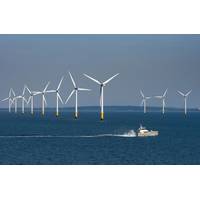Norway, Sweden to Raise Renewable Energy Target
Norway and Sweden agreed on Friday to increase a joint 2020 renewable energy target by almost 8 percent under a subsidy scheme which could lead to higher energy prices for consumers.
Under the new target, the two Nordic countries aim to raise the amount of electricity they produce in total from renewable energy sources such as wind, hydro or biomass to 28.4 terawatt-hours (TWh) per year by 2020 from 26.4 TWh.
The changes to the common support scheme need to be approved by lawmakers in both countries before it comes into effect.
Norway and Sweden launched the first cross-border renewable support scheme in the world in 2012. Producers receive electricity certificates depending on how much green power they produce, which they can sell on the market for profit.
However, the system is financed by electricity end-users, as the costs of the certificates are added to electricity bills, meaning consumers in Norway and Sweden contribute to paying for rises in renewable energy production.
Higher renewables output could also increase pressure on already low Nordic power prices, hurting revenues of such power producers as Vattenfall or Statkraft.
Nordic spot power prices fell to 29.61 euros per megawatt-hour (MWh) in 2014, the lowest since 2007, partly due to more renewable power being added, sluggish demand and warm weather.
However, the wind power industry welcomed the news.
"It's a big boost for the Nordic electricity certificate market. There will be additional 2 TWh to fight for," said Andreas Thon Aasheim, an advisor at Norwegian wind power association Norwea, referring to the additional renewable output agreed by the two countries.
Norway lags Sweden on wind power production, but the Norwegian government has agreed to harmonise depreciation rules for wind power projects to bring them into line with Sweden. (Reporting by Nerijus Adomaitis











